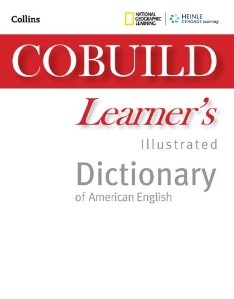|
| |
Review: The Cobuild Learner’s Illustrated Dictionary of American EnglishWilliam Stone, Northeastern Illinois University  To cut to the chase, this is undoubtedly the best dictionary available for low and intermediate learners of English. The dictionary is absolutely laden with information, yet it is presented in such a way that it is inviting rather than intimidating to the reader. To cut to the chase, this is undoubtedly the best dictionary available for low and intermediate learners of English. The dictionary is absolutely laden with information, yet it is presented in such a way that it is inviting rather than intimidating to the reader.The entries are laid out in an easy to read fashion with each head-word printed in blue with the exception of the three thousand most commonly used words which are in pink. Given that a knowledge of the two thousand words of the General Service List will enable a learner to understand more than 80% of written text and up to 95% of colloquial speech, this is useful information. Moving on to the definitions; they are clear, never circular, and in full sentences. They also have the advantage of being supported by naturally occurring examples of the words used in sentences taken from the very extensive Collins Corpus. All of this is in vocabulary that is less difficult than the words being defined. For the less general words, the definitions also include the field in which the words are used, business, music, social studies etc. For many words we are also told of the language of origin. There are, of course, pronunciation guidelines. The grammatical information provided is transparent and generous. The parts of speech are given accurately. In looking up “some”, this dictionary rightly labels the word “Det” for determiner. This contrasts with Merriam Webster’s Essential Learner’s Dictionary which inaccurately labels it an adjective. The entries provide vital information on the countability of nouns, their plural forms and whether a verb is linking, transitive or intransitive. (Personally, I would have liked a ditransitive option too.) The simple past and participle forms are also given. (Another small weakness is that there is no distinction between attributive and predicative uses of adjectives, but that is a slightly less impactful omission.) It might be expected that the above would be included, but there are other elements that are extremely useful to a language learner. For me, at the top of the list come the “Word Partnerships” found throughout the dictionary. These give collocations, a knowledge of which separates the ELL from the fluent speaker. When looking up “paper”, you will find “morning paper”, “daily paper”, “research paper”, “blank paper”, “present a paper” among others. “Word Link” provides morphological information showing how both affixes and roots occur in many words. The “Thesaurus” provides synonyms and other related words. “Word Webs” give illustrated encyclopedia entries with emphasis on topically related vocabulary in context. Another feature that is particularly useful is the “Picture Dictionary”. We are accustomed to seeing small illustrations in the margins of dictionaries, but these colorful illustrations are genuinely helpful for the ELL. Look up “egg” and see pictures of soft and hard boiled eggs, fried eggs, scrambled eggs, even an omelet. “Hair” doesn’t just show the difference between braids, pigtails and ponytails, it also shows the words we use to describe different colored hair. This is the quality of information that will not be found elsewhere. At the end of the book are the Writer’s and Speaker’s Handbooks providing guidance on formal writing and useful expressions for greeting, using the telephone, agreeing, apologizing and a plethora of other situations. This is an extremely attractive book that is a must for any ESL classroom. | |
| ITBE Link - Volume 41 Number 4 |